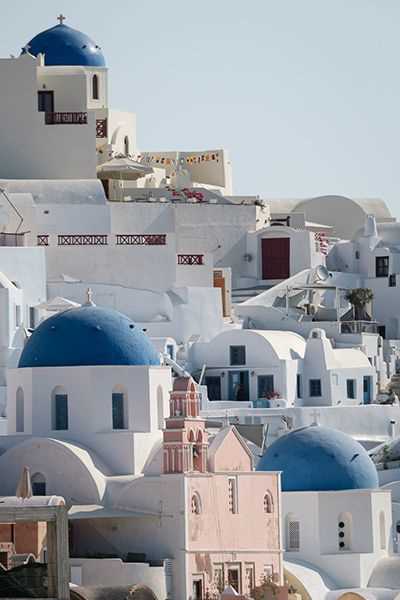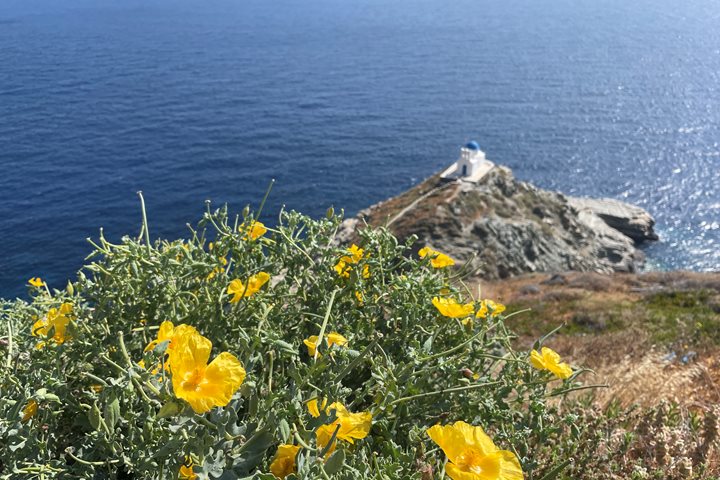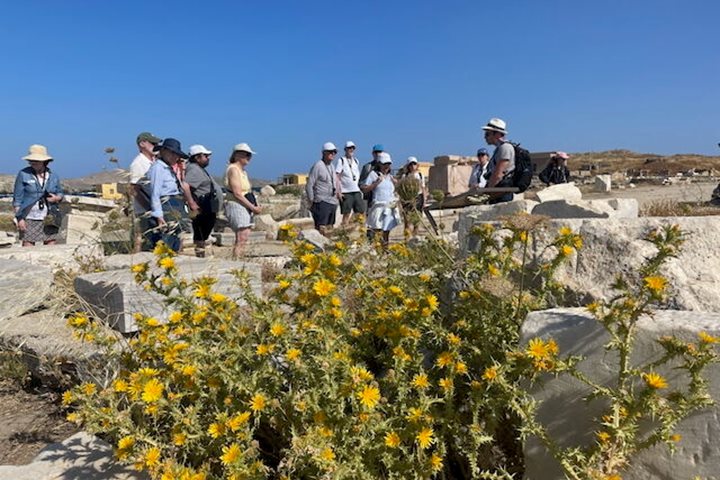The sun broke over the volcanic black cliffs of Santorini (Thera in Greek) by 6:15, and at 7:10 we sailed into the fabulous caldera. The massive volcanic explosion of 1600 BC removed two-thirds of the existing island and created the largest caldera on Earth—more than five miles across and 1,300 feet deep. Our first stop of the day was the northern city of Oia, a warren of little lanes filled with shops selling everything from antiques to precious diamonds to gelato. Several of us visited the far northern point of the fortress at the tip of Oia where we had breathtaking views across the caldera. An extra-special and beautiful architectural feature was the blue and white Orthodox church in the main square. This plaza has become a very popular site for destination weddings of wealthy Chinese visitors, who arrive and get dressed in elaborate western gowns and tuxedos and have their photographs taken with the church as a background.
Our next stop was the very fine, small museum in Fira which displays some of the treasures unearthed from the archaeological dig at Akrotiri. The fresco paintings here are art of the highest order. Particularly impressive is the fresco of the blue monkeys, which dates from approximately 1500 BC and indicates the artist had seen such animals, which are not found in the Cyclades. We then had a lovely Greek al fresco lunch—a kind of Greek “dim sum” of small plates with scrumptious bits appearing on our tables with some frequency. And of course, carafes of the local, delicious white wine were in abundance.
After lunch, we drove a short distance to the incredible archaeological site of Akrotiri. Few sites in the world are as well protected from the elements, as the entire site is covered with a massive roof that lets in light but protects the village. The site was not discovered until the archaeologist Spirodon Marinatos began digging in the 1960s. Under 25 feet of volcanic ash, he found the ancient town. We now can walk around the perimeter and in the very precincts of the city. Imagine that almost 3,500 years ago, the inhabitants of this town were dwelling in lovely multi-story homes with toilets on upper floors, operating sewer systems, and walls filled with splendid frescoes. The evidence of the frescoes suggests that life was easy, food from the sea plentiful, and warfare seldom. Unlike Pompeii, which was instantly destroyed in the pyroclastic flow of intense heat and gas, the inhabitants of Akrotiri were able to leave before the explosion. The archaeology shows that they hurriedly left their goods in place and fled. We do not know where they went but no human remains have been found onsite. We do know that Akrotiri was deeply influenced by the powerful Minoan culture of Crete.
We left this remarkable place and boarded a ferry for our home on Sea Cloud. In the evening, we had an outdoor Greek dinner despite the memorable winds.









